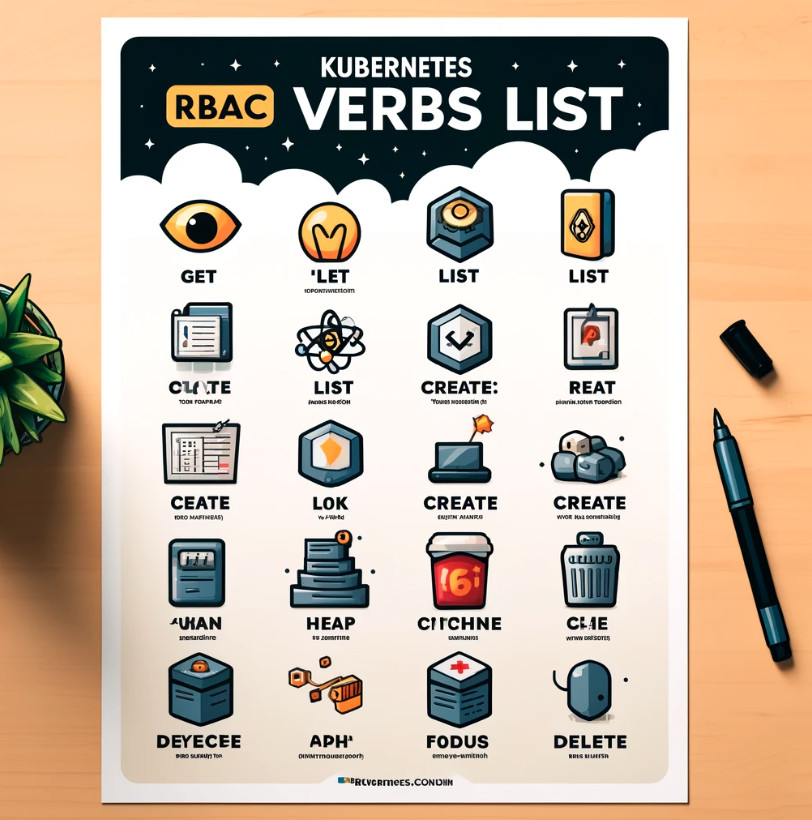Table of Contents
Introduction
Kubernetes, a leading container management platform, offers a robust access control framework known as Role-Based Access Control (RBAC). RBAC allows users to tightly control access to Kubernetes resources, thereby enhancing security and efficient management.
Defining RBAC Verbs
- Get: This verb allows users to access detailed information about a specific object. In a multi-user environment, ensuring that only authorized users can “get” information is crucial.
- List: Provides the ability to see all objects within a group, allowing users a comprehensive view of available resources.
- Watch: Users can monitor real-time changes to Kubernetes objects, aiding in quick detection and response to events.
- Create: Creating new objects is fundamental for expanding and configuring services within Kubernetes.
- Update: Updating an object allows users to modify existing configurations, necessary for maintaining stable and optimal operations.
- Patch: Similar to “update,” but allows for modifications to a part of the object without sending a full new configuration.
- Delete: Removing an object when it’s no longer necessary or to manage resources more effectively.
- Deletecollection: Allows users to remove a batch of objects, saving time and effort in managing large resources.
Why Are RBAC Verbs Important?
RBAC verbs are central to configuring access in Kubernetes. They not only help optimize resource management but also ensure that operations are performed within the granted permissions.
Comparing with Other Access Control Methods
Compared to ABAC (Attribute-Based Access Control) and DAC (Discretionary Access Control), RBAC offers a more efficient and manageable approach in multi-user and multi-service environments like Kubernetes. Although RBAC can be complex to configure initially, it provides significant benefits in terms of security and compliance.
For example, a typical RBAC role might look like this in YAML format when defined in a Kubernetes manifest:
apiVersion: rbac.authorization.k8s.io/v1
kind: Role
metadata:
namespace: default
name: pod-reader
rules:
- apiGroups: [""]
resources: ["pods"]
verbs: ["get", "watch", "list"]In this example, the Role named “pod-reader” allows the user to perform “get”, “watch”, and “list” operations on Pods within the “default” namespace. This kind of granularity helps administrators control access to Kubernetes resources effectively, ensuring that users and applications have the permissions they need without exceeding what is necessary for their function.

Conclusion
RBAC is an indispensable tool in Kubernetes management, ensuring that each operation on the system is controlled and complies with security policies. Understanding and effectively using RBAC verbs will help your organization operate smoothly and safely.
References
For more information, consider consulting the official Kubernetes documentation and online courses on Kubernetes management and security. I hope will this your helpful. Thank you for reading the DevopsRoles page!
